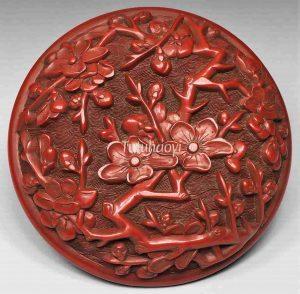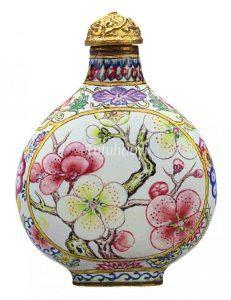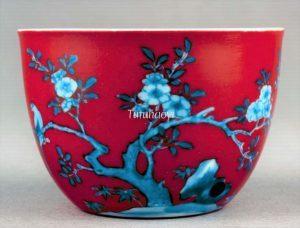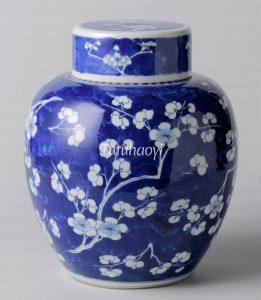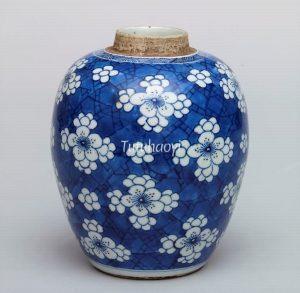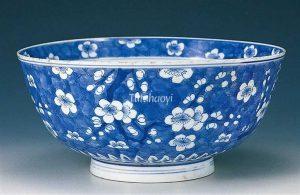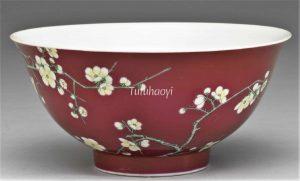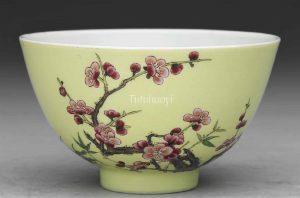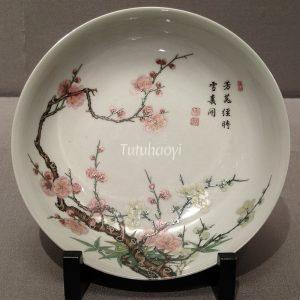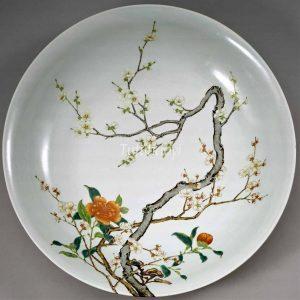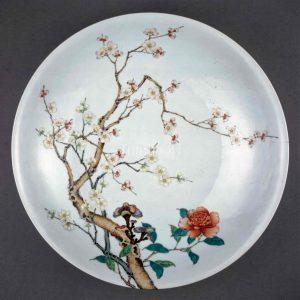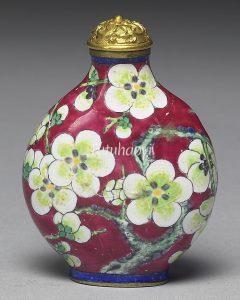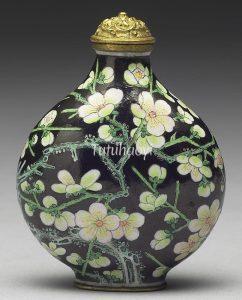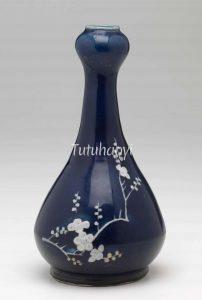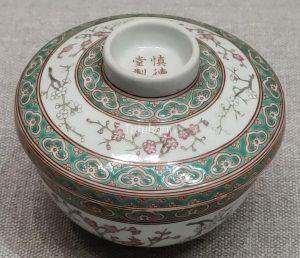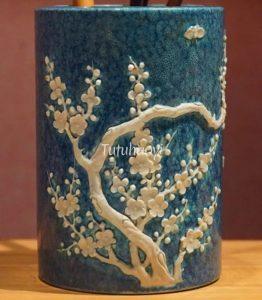Prunus (Plum Blossom)
梅(花)
© Tutuhaoyi.com owns the copyright of the description content for the images attached. Quoting all or part of the description content on this page is permitted ONLY IF ‘Tutuhaoyi.com’ is clearly acknowledged anywhere your quote is produced unless stated otherwise. (本页描述内容版权归Tutuhaoyi.com所有,转发或引用需注明 “Tutuhaoyi.com”, 侵权必究, 已注开源信息的条目除外。)
The tree commonly referred to in English as the flowering plum in fact belongs to the species Prunus mume, which is part of the apricot family.
With the pine and bamboo, the plum is one of the Three Friends of Winter 岁寒三友, symbols of strength and endurance. Unlike its fellow plants in this group, the plum is not an evergreen, but it enjoys a special significance as the first tree of the year to blossom, even before the cherry. The briefly-flowering pretty red, white or pink blossoms – which appear before the leaves – signify the imminence of spring, and are emblems of hope, as well as of beauty, virginity and the fleeting nature of existence.
Furthermore, the plum, bamboo, chrysanthemum and orchid constitute what are traditionally known as the Four Gracious (or Gentlemanly) Plants 四君子. The five petals of the plum blossom also symbolise the Five Elements (wood, fire, earth, metal and water), and the Five Blessings (longevity, wealth, wellbeing and peace, love of virtue, and natural death).
Read Dr Yibin Ni’s narrative here for more symbolic meanings of the plum blossom for Chinese literati.
Fig 1: porcelain vase with two handles and appliqué of plum blossoms, Yuan dynasty (1271–1368), courtesy of the Shanghai Museum, China; Photograph by Rachel Ma
Fig 2: porcelain vase with underglaze blue decoration, Yongle period (1403–24), Ming dynasty, courtesy of the Trustees of the British Museum
Fig 3: lidded lacquer container, 16th century, courtesy of the National Palace Museum, Taipei
Fig 4: porcelain bottle with monochrome blue glaze and white slip decoration, probably Wanli period (1573–1620), Ming dynasty, courtesy of the Trustees of the British Museum
Fig 5: copper snuff-bottle with enamelled decoration, Kangxi period (1662–1722), Qing dynasty, courtesy of the Palace Museum, Beijing
Fig 6: porcelain vase with underglaze blue decoration, Kangxi period (1662–1722), Qing dynasty, courtesy of the Tibet Museum, China; Photograph by Gary Todd
Fig 7: porcelain cup with underglaze blue and overglaze red enamelled decoration, Kangxi period (1662–1722), Qing dynasty, courtesies of SOAS and the Trustees of the British Museum
Fig 8: ovoid covered jar with underglaze blue decoration, Kangxi period (1662–1722), Qing dynasty, courtesy of the Rijksmuseum, Amsterdam
Fig 9: porcelain jar with underglaze blue decoration, 17th – 18th century, courtesy of Tokyo National Museum
Fig 10: porcelain bowl with underglaze blue decoration, Kangxi period (1662–1722), Qing dynasty, courtesy of Suzhou Museum, Jiangsu Province, China
Fig 11: falangcai porcelain bowl, Yongzheng period (1723–35), Qing dynasty, courtesy of the National Palace Museum, Taipei
Fig 12: falangcai porcelain tea cup, Yongzheng period (1723–35), Qing dynasty, courtesy of the National Palace Museum, Taipei
Fig 13: porcelain dish with overglaze enamelled decoration, Yongzheng period (1723–35), Qing dynasty, courtesy of Tokyo National Museum; Photograph by Rachel Ma
Fig 14: porcelain dish with overglaze enamelled decoration, Yongzheng period (1723–35), Qing dynasty, courtesy of the Walters Art Museum, Baltimore
Fig 15: porcelain saucer-shaped dish with overglaze enamelled decoration, Yongzheng period (1723–35), Qing dynasty, courtesy of the Trustees of the British Museum
Fig 16: copper snuff-bottle with enamelled decoration, Yongzheng period (1723–35), Qing dynasty, courtesy of the National Palace Museum, Taipei
Fig 17: copper snuff-bottle with enamelled decoration, Yongzheng period (1723–35), Qing dynasty, courtesy of the National Palace Museum, Taipei
Fig 18: porcelain bottle with overglaze enamelled decoration, Qianlong period (1736–95), Qing dynasty, courtesy of the National Palace Museum, Taipei
Fig 19: porcelain bottle, 18th century, courtesy of the National Gallery of Victoria, Melbourne. Photo: National Gallery of Victoria, Melbourne
Fig 20: copper vase with enamelled decoration, mid-late Qing dynasty, courtesy of the National Palace Museum, Taipei
Fig 21: famille rose porcelain bowl with cover, Daoguang period (1821–50), Qing dynasty, courtesy of the Palace Museum, Beijing; Photograph by Rachel Ma
Fig 22: porcelain brush holder, Qing dynasty (1644–1911), courtesy of Guangdong Provincial Museum, China
Fig 23: porcelain vase with underglaze blue decoration, Qing dynasty (1644–1911), courtesy of the National Palace Museum, Taipei


